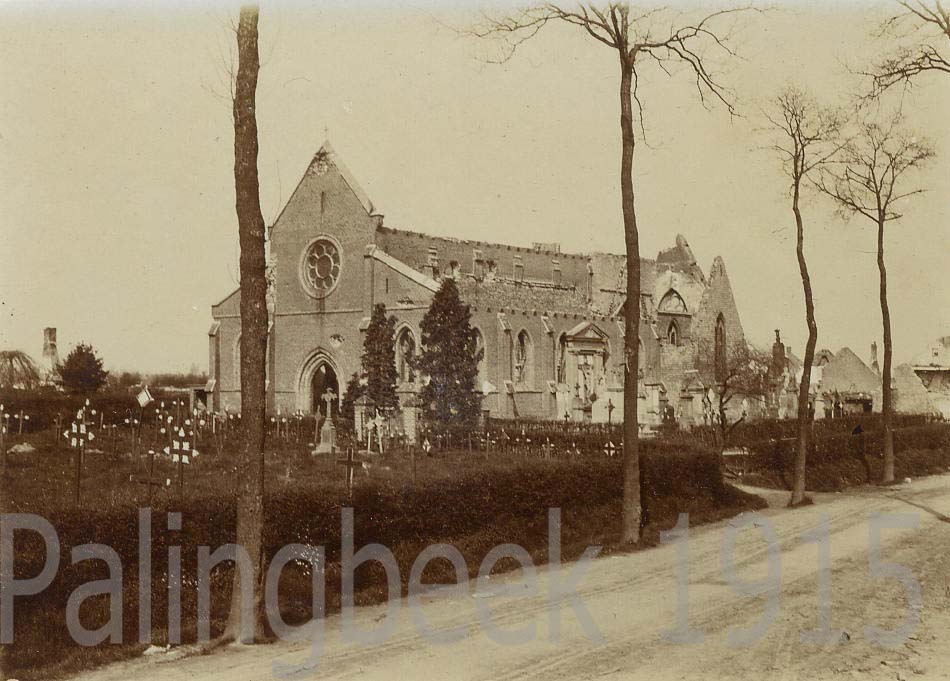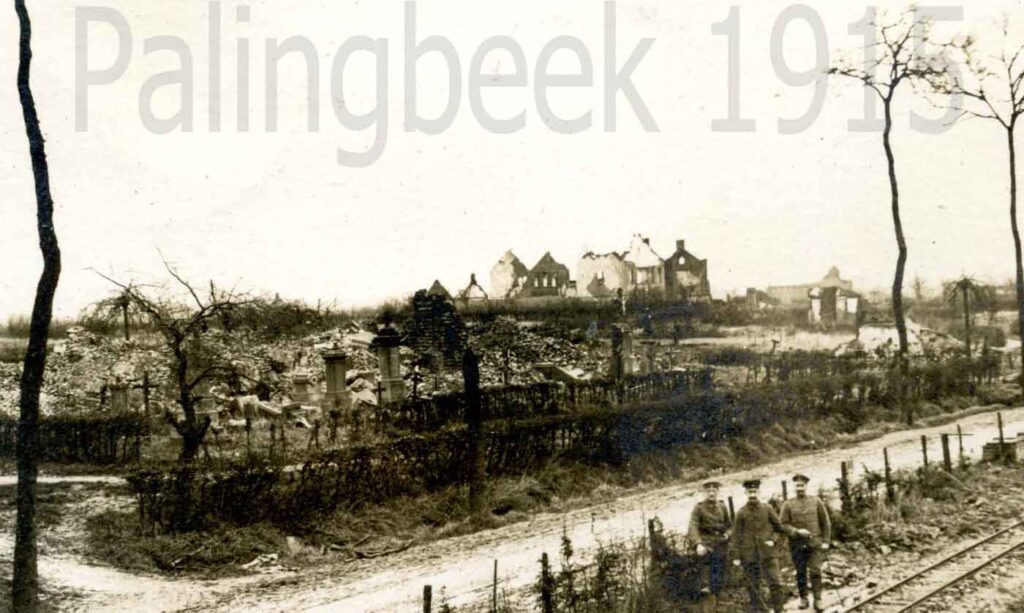The crew of the armoured train witnessed the fate of Hollebeke church:-
23rd October 1914
At about 8 a.m. the Germans began a violent shelling of Hollebeke on my left (sic) making a dead set on the church, which, from our point of view on the flank, made a most picturesque bit of shooting. They first ranged on the church with high explosive, and then burst into salvoes of shrapnel. After straddling the roof with a line of high bursts, they next hit, then never missing, the roof and building, so that within a few minutes it was in flames.L.F. Robinson, The Naval Guns in Flanders [1920] p. 63-64

And so the church stood, its roof and interior stripped by the fire of October 1914. At least it did until the latest photo I can find of it dated 16.6.1915 (in collection Philip Woets). Now consider this:-

Photo on postcard sent on 27.1.1917: The church is the pile of rubble in the centre left, behind some of the grave markers which are still standing. So the question is, when did the Germans blow up the church? There was no artillery in 1916 that could hit a target at a range of 4 kilometres so precisely that it would be reduced to rubble like this and leaving the two lines of hedge and a row of tombstones intact. Add to that the fact that this church was not under direct observation by the Belgian-British forward artillery observers. Hollebeke received occasional routine shelling, but this was shooting at a map reference only.
Sent forward to examine captured ground after the Battle of Messines, a British officer wrote:-
One morning I went off with my Major to see if we could find somewhere from which we could observe a shoot on Hollebeke. Before the battle had started we had been issued with a postcard on which were drawings of all the village churches behind German lines. Unfortunately, Hollebeke Church, … had been knocked flat, and instead of seeing a certain sort of tower and spire all one saw were battered woods and fields stretching back into the distance.
R.B. Talbot A Subaltern’s Odyssey [William Kimber 1980] p. 167
Our best guess is that the general weekly shelling of Hollebeke in late 1915 made a few lucky hits, and was misconstrued by the Germans as being aimed fire. Dismantling the church would deny observers like Captain Talbot Kelly the aiming point that he went looking for after the advance of the line in mid-1917.